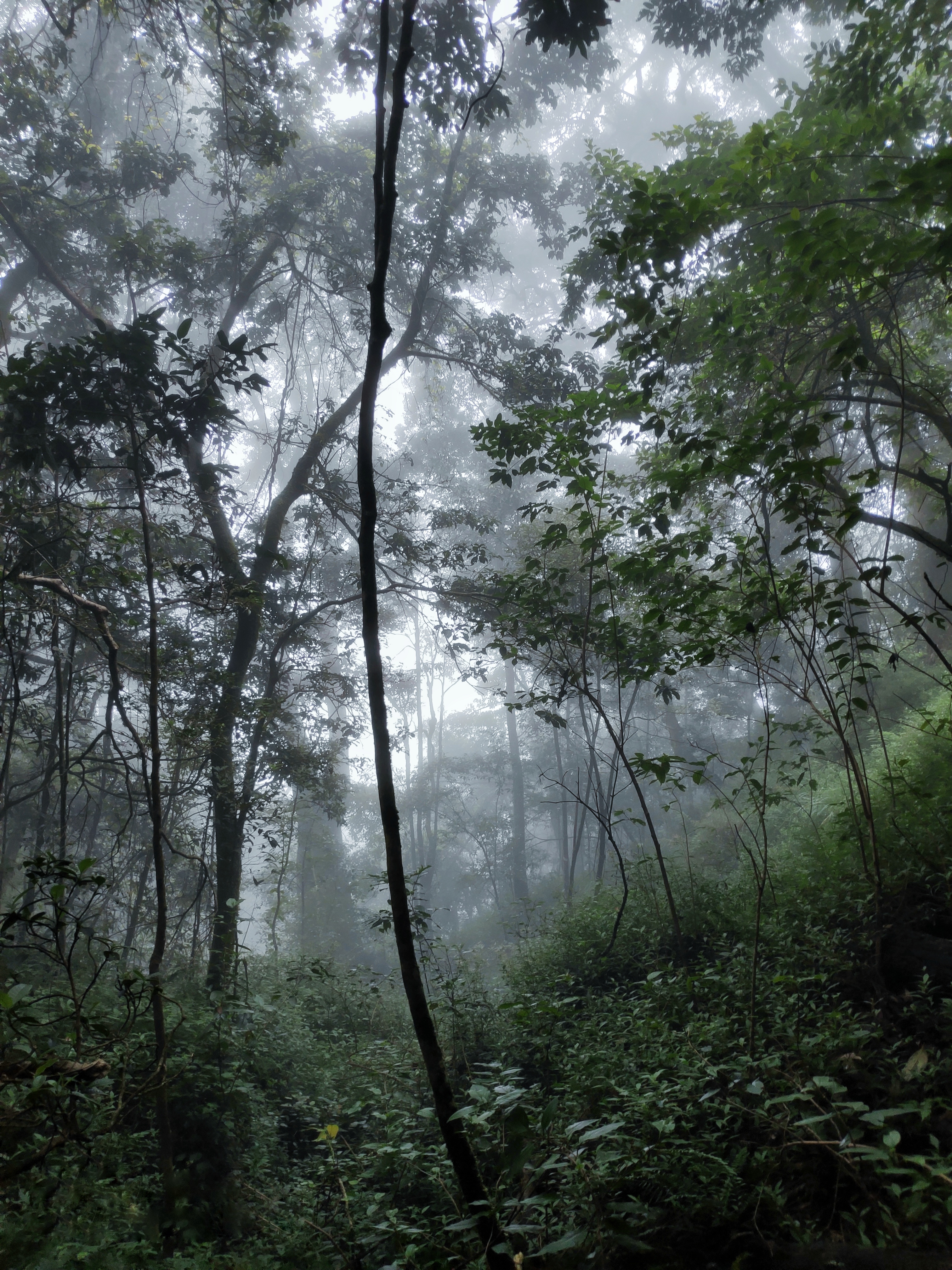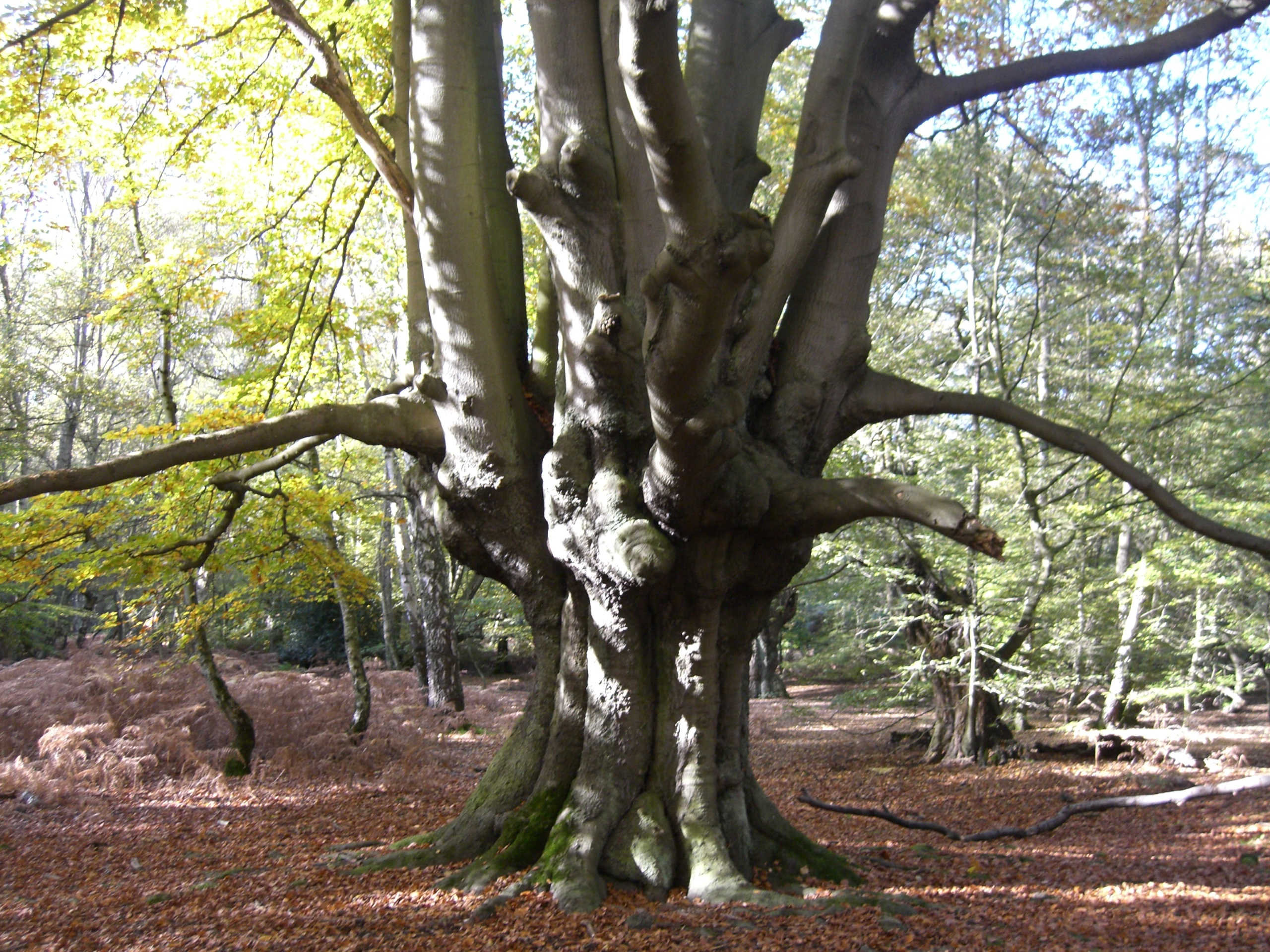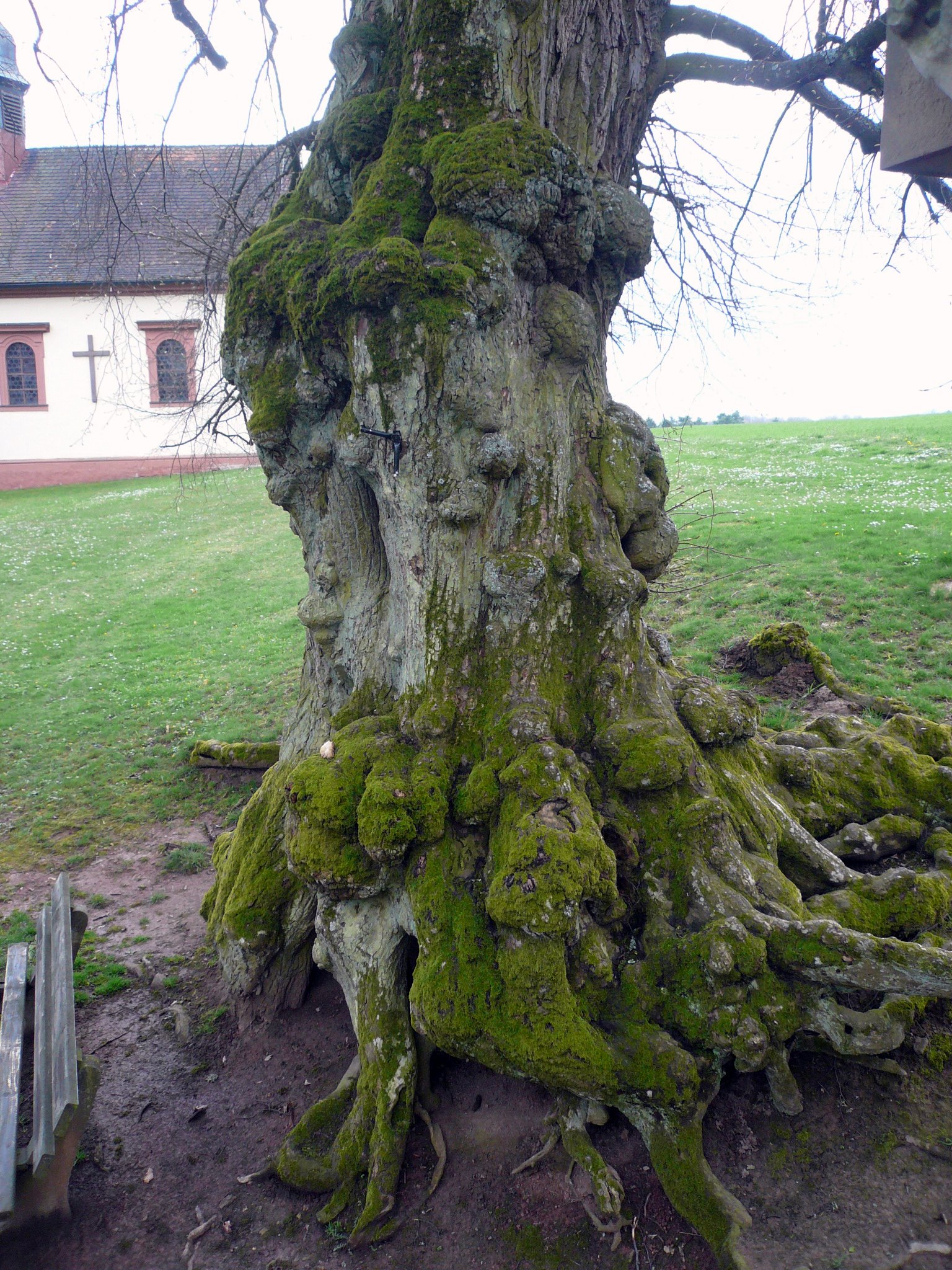|
Coppicing
Coppicing is the traditional method in woodland management of cutting down a tree to a tree stump, stump, which in many species encourages new Shoot (botany), shoots to grow from the stump or roots, thus ultimately regrowing the tree. A forest or grove that has been subject to coppicing is called a copse or coppice, in which young tree stems are repeatedly cut down to near ground level. The resulting living stumps are called Living stump, stools. New growth emerges, and after a number of years, the coppiced trees are harvested, and the cycle begins anew. Pollarding is a similar process carried out at a higher level on the tree in order to prevent grazing animals from eating new shoots. ''Daisugi'' (台杉, where ''sugi'' refers to Japanese cedar) is a similar Japanese technique. Many silviculture practices involve cutting and regrowth; coppicing has been of significance in many parts of lowland temperate Europe. The widespread and long-term practice of coppicing as a landscape ... [...More Info...] [...Related Items...] OR: [Wikipedia] [Google] [Baidu] |
Silviculture
Silviculture is the practice of controlling the growth, composition/structure, as well as quality of forests to meet values and needs, specifically timber production. The name comes from the Latin ('forest') and ('growing'). The study of forests and woods is termed ''silvology''. Silviculture also focuses on making sure that the treatment(s) of Stand level modelling, forest stands are used to conserve and improve their productivity. Generally, silviculture is the science and art of growing and cultivating forest crops based on a knowledge of silvics, the study of the life history and general characteristics of forest trees and stands, with reference to local/regional factors. The focus of silviculture is the control, establishment and management of forest stands. The distinction between forestry and silviculture is that silviculture is applied at the Stand level modelling, stand-level, while forestry is a broader concept. Adaptive management is common in silviculture, while fores ... [...More Info...] [...Related Items...] OR: [Wikipedia] [Google] [Baidu] |
High Forest (woodland)
A high forest is a type of forest originated from seed or from planted seedlings. In contrast to a low forest (also known as a coppice forest), a high forest usually consists of large, tall mature trees with a closed canopy. High forests can occur naturally or they can be created and maintained by human management. Trees in a high forest can be of one, a few or many species. A high forest can be even-aged or uneven-aged. Even-aged forests contain trees of one, or two successional age classes (generations). Uneven-aged forests have three or more age classes represented. High forests have relatively high genetic diversity compared with coppice forests, which develop from vegetative reproduction. A high forest can have one or more canopy layers. The understory of a high forest can be open (parklike, easy to see and walk through), or it can be dense. A high forest's understory can have high or low vegetation species diversity. See also * Coppicing * Ecological thinning * Ol ... [...More Info...] [...Related Items...] OR: [Wikipedia] [Google] [Baidu] |
Woodland Management
Forest management is a branch of forestry concerned with overall administrative, legal, economic, and social aspects, as well as scientific and technical aspects, such as silviculture, forest protection, and forest regulation. This includes management for timber, aesthetics, recreation, urban values, water, wildlife, inland and nearshore fisheries, wood products, plant genetic resources, and other forest resource values. Management objectives can be for conservation, utilisation, or a mixture of the two. Techniques include timber extraction, planting and replanting of different species, building and maintenance of roads and pathways through forests, and preventing fire. Many tools like remote sensing, GIS and photogrammetry modelling have been developed to improve forest inventory and management planning. Scientific research plays a crucial role in helping forest management. For example, climate modeling, biodiversity research, carbon sequestration research, GIS applica ... [...More Info...] [...Related Items...] OR: [Wikipedia] [Google] [Baidu] |
Pollarding
Pollarding is a pruning system involving the removal of the upper branches of a tree, which promotes the growth of a dense head of foliage and branches. In ancient Rome, Propertius mentioned pollarding during the 1st century BCE. The practice has occurred commonly in Europe since medieval times, and takes place today in urban areas worldwide, primarily to maintain trees at a determined height or to place new shoots out of the reach of grazing animals. Traditionally, people pollarded trees for one of two reasons: for fodder to feed livestock or for wood. Fodder pollards produced "pollard hay" for livestock feed; they were pruned at intervals of two to six years so their leafy material would be most abundant. Wood pollards were pruned at longer intervals of eight to fifteen years, a pruning cycle tending to produce upright poles favored for fencing and boat construction. Supple young willow or hazel branches may be harvested as material for weaving baskets, fences, and garden cons ... [...More Info...] [...Related Items...] OR: [Wikipedia] [Google] [Baidu] |
Alder
Alders are trees of the genus ''Alnus'' in the birch family Betulaceae. The genus includes about 35 species of monoecious trees and shrubs, a few reaching a large size, distributed throughout the north temperate zone with a few species extending into Central America, as well as the northern and southern Andes. Description With a few exceptions, alders are deciduous, and the leaves are alternate, simple, and serrated. The flowers are catkins with elongate male catkins on the same plant as shorter female catkins, often before leaves appear; they are mainly wind-pollinated, but also visited by bees to a small extent. These trees differ from the birches (''Betula'', another genus in the family) in that the female catkins are woody and do not disintegrate at maturity, opening to release the seeds in a similar manner to many conifer cones. The largest species are red alder (''A. rubra'') on the west coast of North America, and black alder (''A. glutinosa''), native to ... [...More Info...] [...Related Items...] OR: [Wikipedia] [Google] [Baidu] |
Tilia
''Tilia'' is a genus of about 30 species of trees or bushes, native throughout most of the temperateness, temperate Northern Hemisphere. The tree is known as linden for the European species, and basswood for North American species. In Great Britain and Ireland they are commonly called lime trees, although they are not related to the citrus Lime (fruit), lime. The genus occurs in Europe and eastern North America, but the greatest species diversity is found in Asia. Under the Cronquist system, Cronquist classification system, this genus was placed in the family Tiliaceae, but genetic research summarised by the Angiosperm Phylogeny Group has resulted in the incorporation of this genus, and of most of the previous family, into the Malvaceae. ''Tilia'' is the only known ectomycorrhizal genus in the family Malvaceae. Studies of ectomycorrhizal relations of ''Tilia'' species indicate a wide range of fungal symbionts and a preference toward Ascomycota fungal partners. Description ''T ... [...More Info...] [...Related Items...] OR: [Wikipedia] [Google] [Baidu] |
Protection Forest
Protection forests are forests that mitigate or prevent the impact of a natural hazard, including a rockfall, avalanche, erosion, landslide, debris flow or flooding on people and their assets in mountainous areas. A protection forest generally covers the sloping area between a hazard potential (e.g. an unstable rock cliff or an avalanche release zone) and the endangered or exposed assets. In the Alps, protection forests are increasingly considered equal to engineered mitigation measures against natural hazards. In French, German, Italian and Slovenian protection forests are called respectively, ''Forêt de protection'', ''Schutzwald'', ''foreste di protezione'', ''varovalni gozdovi'', and even their maintain function is to protect soil and to prevent it from eroding or blowing away. Austrian law The Austrian law makes it clear the difference between a protection forest ''Schutzwald'' and a protected forest Bannwald. In this case it can be seen that a protection forest is larg ... [...More Info...] [...Related Items...] OR: [Wikipedia] [Google] [Baidu] |
Charcoal
Charcoal is a lightweight black carbon residue produced by strongly heating wood (or other animal and plant materials) in minimal oxygen to remove all water and volatile constituents. In the traditional version of this pyrolysis process, called charcoal burning, often by forming a charcoal kiln, the heat is supplied by burning part of the starting material itself, with a limited supply of oxygen. The material can also be heated in a closed retort. Modern charcoal briquettes used for outdoor cooking may contain many other additives, e.g. coal. The early history of wood charcoal production spans ancient times, rooted in the abundance of wood in various regions. The process typically involves stacking wood billets to form a conical pile, allowing air to enter through openings at the bottom, and igniting the pile gradually. Charcoal burners, skilled professionals tasked with managing the delicate operation, often lived in isolation to tend their wood piles . Throughout histo ... [...More Info...] [...Related Items...] OR: [Wikipedia] [Google] [Baidu] |
White Coal
White coal is a form of fuel produced by drying chopped wood over a fire. It differs from charcoal which is carbonised wood. White coal was used in England to melt lead ore from the mid-sixteenth to the late seventeenth centuries. It produces more heat than green wood but less than charcoal and thus prevents the lead evaporating. White coal could be used mixed with charcoal for other industrial uses than lead smelting.Muir, Richard (2008). ''Woods, Hedgerows and Leafy Lanes.'' Pub. Tempus, Stroud. . pp. 91 - 92. White coal was produced in distinctive circular pits with a channel, known as Q-pits. They are frequently found in the woods of South Yorkshire. Resources Although traditionally made by drying chopped wood, white coal can be made from numerous waste products, most of which are formed into briquettes. Raw materials which can be used include: * Groundnut shells * Cotton hulls and stalks * Castor seed shells * Forest leaves; wood chips and shavings * Sugarcane bagasse * Ric ... [...More Info...] [...Related Items...] OR: [Wikipedia] [Google] [Baidu] |
Henry VIII
Henry VIII (28 June 149128 January 1547) was King of England from 22 April 1509 until his death in 1547. Henry is known for his Wives of Henry VIII, six marriages and his efforts to have his first marriage (to Catherine of Aragon) annulled. His disagreement with Pope Clement VII about such an annulment led Henry to initiate the English Reformation, separating the Church of England from papal authority. He appointed himself Supreme Head of the Church of England and dissolution of the monasteries, dissolved convents and monasteries, for which he was List of people excommunicated by the Catholic Church, excommunicated by the pope. Born in Greenwich, Henry brought radical changes to the Constitution of England, expanding royal power and ushering in the theory of the divine right of kings in opposition to papal supremacy. He frequently used charges of treason and heresy to quell dissent, and those accused were often executed without a formal trial using bills of attainder. He achi ... [...More Info...] [...Related Items...] OR: [Wikipedia] [Google] [Baidu] |
Tanning (leather)
Tanning, or hide tanning, is the process of treating Skinning, skins and Hide (skin), hides of animals to produce leather. A tannery is the place where the skins are processed. Historically, vegetable based tanning used tannin, an acidic chemical compound derived from the bark of certain trees, in the production of leather. An alternative method, developed in the 1800s, is chrome tanning, where chromium salts are used instead of natural tannins. History Tanning hide into leather involves a process which permanently alters the protein structure of skin, making it more durable and less susceptible to decomposition and coloring. The place where hides are processed is known as a ''tannery''. The English word for tanning is from the medieval Latin verb , from the noun (oak bark). This term may be derived from a Celtic word related to the Proto-Indo-European *' meaning 'fir tree'. (The same root is the source for Old High German meaning 'fir', related to modern German ''Tannenb ... [...More Info...] [...Related Items...] OR: [Wikipedia] [Google] [Baidu] |
Sweet Track
The Sweet Track is an ancient trackway, or causeway, in the Somerset Levels, England, named after its finder, Ray Sweet. It was built in 3807 BC (determined using dendrochronology – tree-ring dating) and is the second-oldest timber trackway discovered in the British Isles, dating to the Neolithic British Isles, Neolithic. The Sweet Track was predominantly built along the course of an earlier structure, the Post Track. The track extended across the now largely drained marsh between what was then an island at Westhay and a ridge of high ground at Shapwick, Somerset, Shapwick, a distance close to or around . The track is one of a network that once crossed the Somerset Levels. Various artifacts and prehistoric finds, including a jadeitite ceremonial axe head, have been found in the peat bogs along its length. Construction was of crossed wooden poles, driven into the waterlogged soil to support a walkway that consisted mainly of planks of oak, laid end-to-end. The track was ... [...More Info...] [...Related Items...] OR: [Wikipedia] [Google] [Baidu] |








